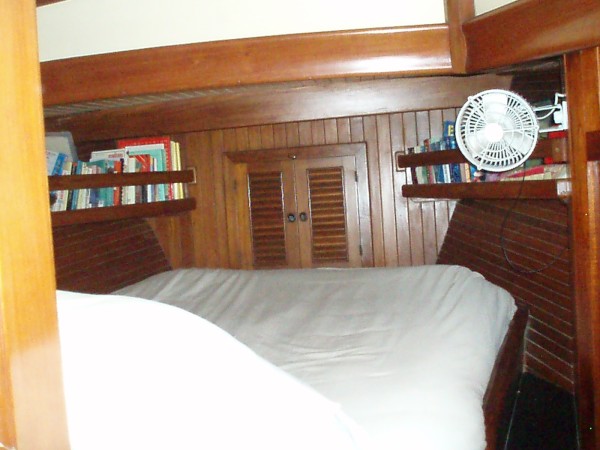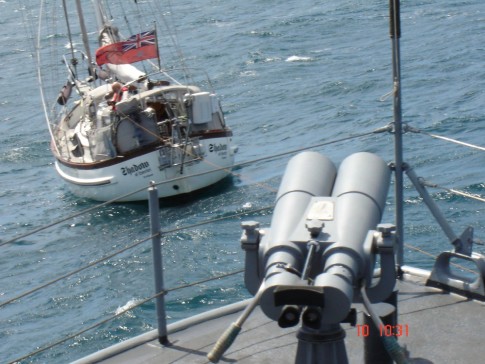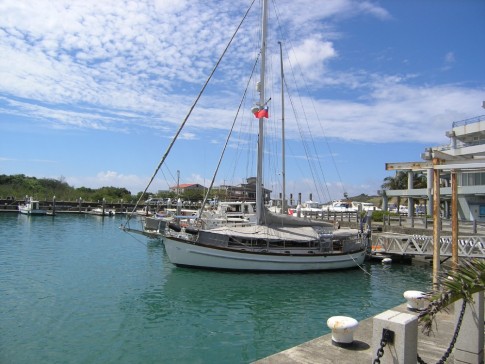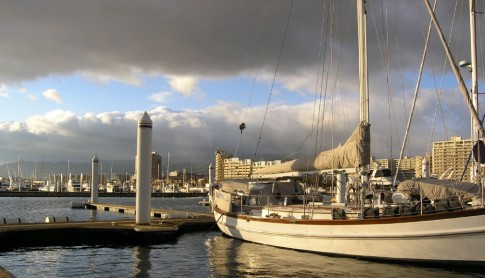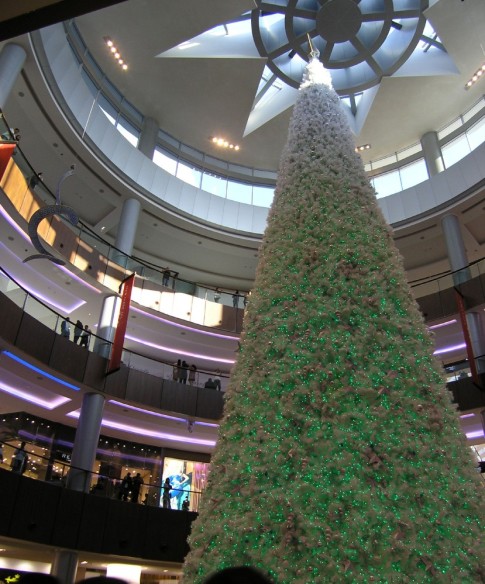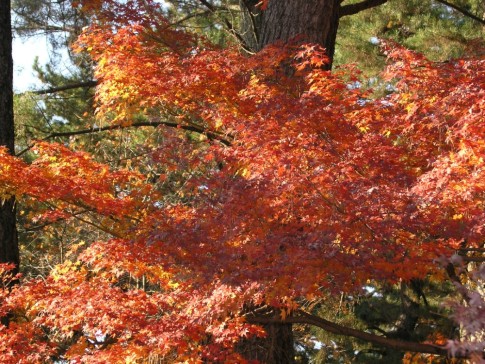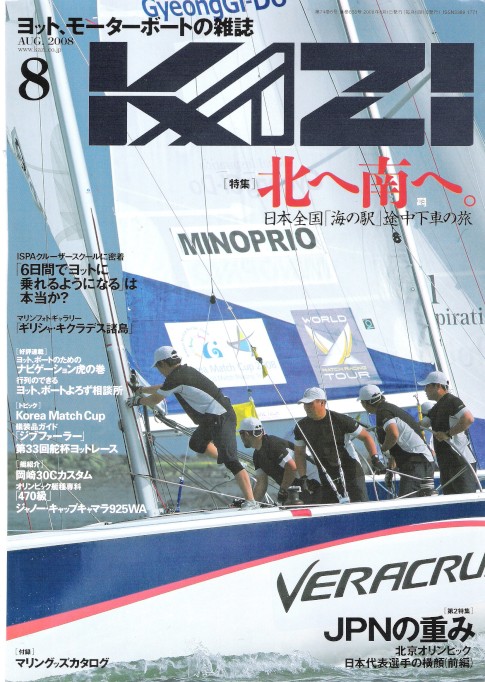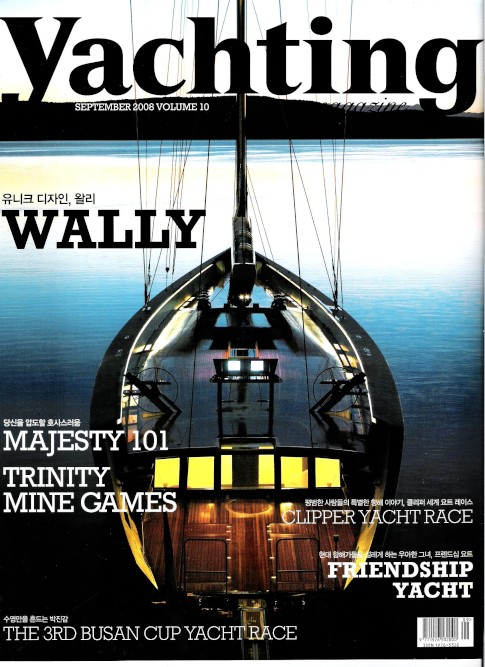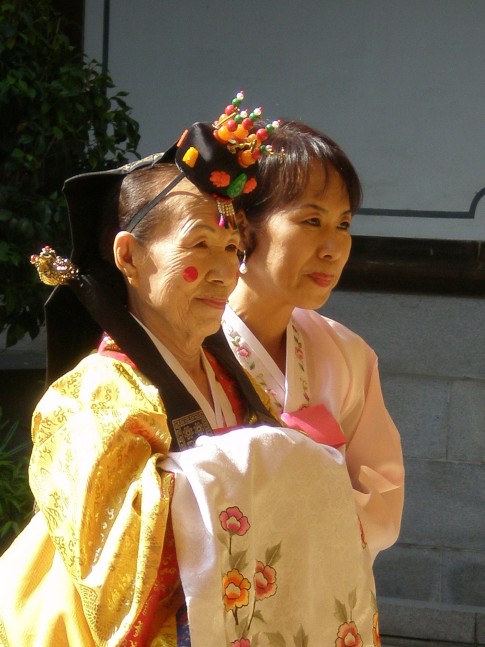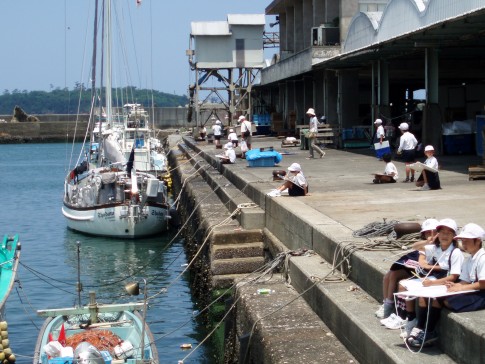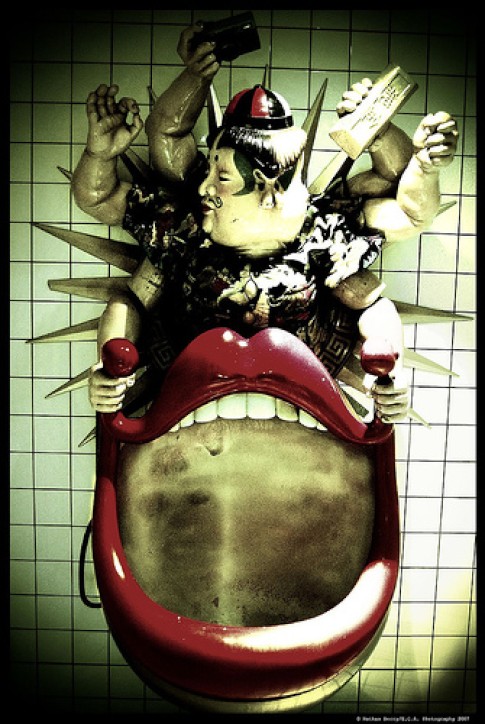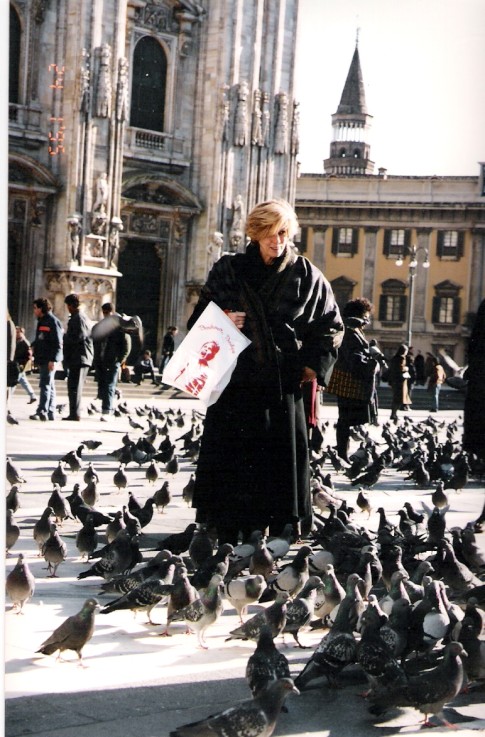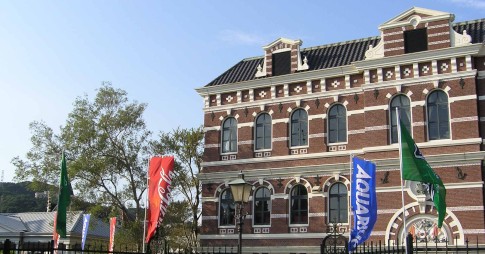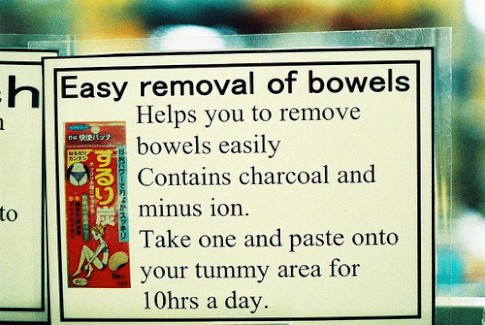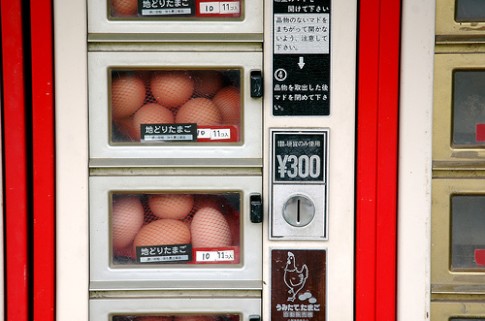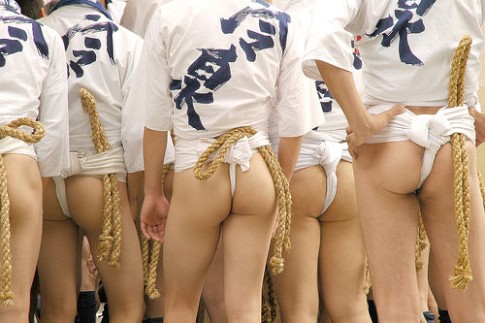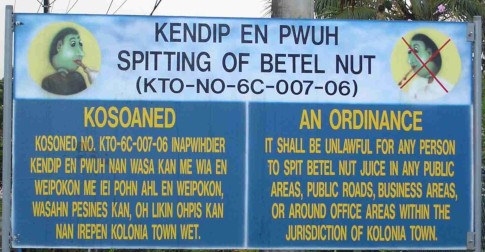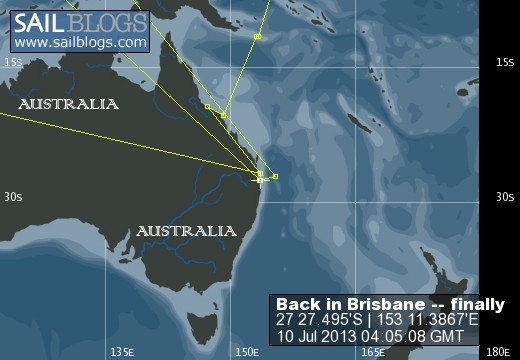
S.V. Shadow of Lorelei
Three yachts, two people, one quest.
11 July 2013 | Kota Kinabalu
10 July 2013
10 July 2013 | East Coast Marina, Manly, Brisbane, Australia
16 February 2011 | Kota Kinabalu, Borneo
09 January 2011
22 June 2010 | Kota Kinabalu, Borneo, Malaysia
19 December 2009 | Subic Bay Yacht Club
12 October 2009 | Ho Chi Minh City, Vietnam
26 July 2009 | Olongapo, Philippines
02 July 2009 | San Fernando, Philippines
01 June 2009 | Ishigaki, Japan
10 May 2009 | Kochi Prefecture, Shikoku
10 May 2009 | Tokushima, Shikoku.
10 May 2009 | Sumoto Harbour, Awaji Island, Hyogo
10 May 2009 | Kobe, Hyogo.
10 May 2009 | Nagasaki Prefecture, North Western Kyushu.
10 May 2009 | Hirado Island, North Western Kyushu
10 May 2009 | Kochi Prefecture.
10 May 2009 | Osaka
10 May 2009 | Iki Island, Nagasaki Prefecture.
Provisioning for Japan
09 January 2011
Pauline

The following is only meant to be a helpful guide to what to bring to Japan; I have been asked so many times for information, but have written this after leaving Japan. At a distance, I have done my best to recall details, but welcome criticism, corrections and additions. Send a message if you would like to add, alter or comment on anything at all.
Reading labels is a challenge, as nearly all packaging is inJapanese kana, mixed with Chinese characters (kanji). The ability to read Hiragana and Katakana will help a lot, as well as making shopping much more fun; but if you find it too challenging to learn, for a short stay many cruisers manage without knowing a single symbol. The kind, courteous and helpful nature of the Japanese overcame our language short-comings. At a minimum you must learn the 3 symbols (kana and kanji) for milk, the kana for yoghurt (drinking yoghurt comes in the same carton as milk).
The second challenge is buying long life and bulk foods anywhere outside the major centres. Because Japanese people buy many meals ready cooked from the supermarket and shop daily, there is very little available in long life staples. In fact many foods are in small 1 or 2 person packs, especially fresh fruit and vegetables.
Generally Japan is not the place to stock up on frozen, dried or canned food of any description. UHT or longlife and powdered milk is not available except in very large cities at bulk grocery stores. The easiest place to buy bulk dry goods in Japan, outside of Tokyo is Costco. Check Costco's website for up to date info on their locations. They are generally located on the outskirts of major towns, and require a car or taxi to get to. An exception is Osaka where the Costco is reachable by bus. There are some foreign 'buyers' clubs' in the big cosmopolitan cities, ie Tokyo, Kobe, Osaka, Nagasaki and Hiroshima, but they generally stock a limited range, with an emphasis on frozen meat and convenience foods, at high prices.
Nearly all fishing harbors have a small supermarket just outside; once you are past the outlying islands, due to transport subsidies, prices for staples are very similar whether you are in a tiny island village or the big city. Fresh vegies, fish, chicken are available in even small supermarkets, as are fresh milk, butter, processed cheese, and white bread. There is no need to stock up for more than a few days on the basics, and soft drinks, beer, hot and cold canned coffee as well as tea and bottled water are available for around Y100-150 from the vending machines on every corner. Below are some specifics of hard to find food which you would be better to bring with you for long stays.
Cost of Living in Japan
The extended recession in Japan has kept food prices relatively unchanged since the early 2000s, however, the appreciating Yen has affected prices for visitors. During our 2 year stay the exchange rate changed from Y120=US$1 to Y80=US$1, greatly affecting our cost of living. Approximately 40% of Japanese food is imported, either manufactured by Japanese owned Chinese factories or grown overseas primarily in China or Korea. Quality is generally good, hygeine of handling impressive.
Our general impression was that Japanese food staples were priced lower relative to both Europe and Australia, both of which we visited during our stay. The outstanding exceptions are rice, which whilst grown in Japan is heavily subsidised and price fixed, (approximately US$5 per kilo compared to US$1.50 elsewhere in the world), flour and oats (similar prices to rice). Both rice and flour bought in Japan are excellent quality and generally pest free. All grades of refined and unbleached flour for cake, pastry and breakmaking are available, but rarely wholemeal, multigrain or specialty breadmaking grains such as rye, or multigrain. Good quality yeast and baking powder are easily found, as baking is a popular hobby. Additives such as lecithin, gluten substitute and dough enhancer are almost impossible to find, but prepacked bread mixes are occasionally available in major city supermarkets. You probably won't be baking bread all that often anyway because excellent bakeries proliferate, baking all sorts of tempting french style pastries, breads and buns several times a day; you even find freshly baked on the premises baguettes at some convenience stores. But if you are a keen baker, gifts of home baked goods are always welcome and appropriate in return for the amazing generosity and hospitality you will experience.
Brown unrefined rice is even more expensive than refined, but is relatively easy to find in smaller size (1-2kg) packs in big cities. American style refined cornflakes are in all supermarkets - plain, sugar coated or chocolate flavored, but we rarely found other varieties (including high fibre) breakfast cereals. Even the generic brands in silver foil packs are good. Breakfast bars and fruit bars can be found in areas where there are US military bases.
Fresh fruit is priced per piece, apples can range from cheap Y100 per piece up to Y5000 each! whilst tropical fruit is very expensive almost everywhere, including tropical Okinawa, and islands south, where it is grown. Prices are consistent throughout Japan, but are very seasonally influenced. We found prices quite reasonable if we only bought what is in season - for example persimmon and mikan (mandarin) in winter are practically given away and wonderful nashi pear can be less than Y100 each during peak season. Some city arcades have home grown produce for sale by the growers at similar to supermarket prices, but wonderfully fresh.
Bargains include great prawns and oysters, (mostly imported from Philippines) Aussie meat, fresh chicken breast and most green vegies, and bananas which are cheap throughout Japan. All green vegetables, including beans, broccoli, a variety of chinese green vegies and iceberg lettuce are common, as are carrots, onions, garlic, potatoes, pumpkin or squash, capsicum and bitter melon and all are very reasonably priced. Most vegetables are cello packed in 2 person packages averaging around Y100. Japanese consumers insist that goods be packaged contrary to the trend in the rest of the world and typically will not buy loose items.
Fresh tofu is delivered daily to supermarkets, warm, nutty and delicious - even tofu haters enjoy it.
Eating Out
Eating out is cheap at family restaurants with most dishes between Y400-800. Our favorites were Udon restaurants where a bowl of Tempura prawn (ebi) Udon soup costs around Y400. Unfortunately a lot of the food at the lower price end is deep fried, and family restaurant fare can be a bit boring, as they all seem to have the same range.
Beware Yakitori beer houses which seem cheap at just a few yen per plate; but ordering enough for a meal can add up to a big bill. Exclusive sushi restaurants, which can look just like the ordinary ones, are amazingly expensive, a bill of US$100 per person is not uncommon; the safest sushi price option is the sushi train where you pay as little as Y100 per plate of freshly prepared sushi or fresh melon.
Some Suggestions:
If you are entering Japan through Okinawa, there are many supermarket buys which are uncommon further north, and are definitely much cheaper. Examples are breakfast cereals, anything whole grain eg cereal, oats and wheat products, olive and sesame oil, canned premix cocktails and wine, nuts and dried fruit. Chicken (fresh and frozen, especially legs) and prawns and frozen fish are also cheaper on Okinawa, as well as processed cheese cubes, fresh milk & drinking yoghurt, and there is a much larger range of frozen prepared foods eg sausages and fish, gyoza and dim sum. Many US snack foods, eg chips and nuts which you will not find further in to Japanare available here.
Easy to find and inexpensive
The long skinny spaghetti variety and macaroni only, other pasta shapes or wholegrain are available in big cities only. You can find lots of pasta sauce making ingredients including tomato paste, and canned tomatoes in all supermarkets everywhere, as well as sachets of prepared 'Italian style' pasta sauces just like any western supermarket. Cup noodles are readily available, are much better quality than elsewhere, but are not particularly cheap.
Oils
Olive oil is available in most city supermarkets, but can be very expensive. If you see it cheap in Okinawa, buy it there. All other vegetable cooking oils are cheap, although most are blends, so beware if you have a dietary restriction. Bring safflower, peanut, and sunflower oil. Japanese prepared salad dressings are good, as is the mayonaise (best in the world we think).
Dairy Products
Milk - Fresh milk is available everywhere in Japan, generally a combination of imported Australian and Hokaido milk. UHT is available only in full cream in tiny single serve boxes; full cream milk powder is generally hard to find or unavailable. Powdered non-fat milk is available in small packs in the baking section of larger city supermarkets only. Very good butter is available everywhere, as well as butter spread and margarines, similar to those found in western countries.
Cheese - Foil wrapped processed cheddar and processed sandwich slices are relatively inexpensive. Processed canned Camembert, Brie, grated pizza cheese mix, Kraft grated parmesan and cubed cream cheese is available most places at moderate cost. Unprocessed cheese is only available in very limited ranges in the capital cities, and can be very expensive.
The Following are Unavailable or Expensive
Cooking Sauces & Condiments
Any 'foreign' sauces, salad dressings and condiments are sold in tiny uneconomical bottles. If you use a lot (e.g. oyster, hoi sin or char siu sauce, stir fry sauce) bring them. Japanese sauces (soy, sushi sauce, sesame oil, etc) are sold in larger well priced containers.
Preserved vegetables
Frozen vegetables - a few varieties are available in major city supermarkets. In fact, Japan-wide there is very little frozen food available. We never saw convenience frozen foods such as frozen chips, breaded fish and chicken, or mixed vegetables in ordinary supermarkets after Okinawa. Costco and specialty stores, Caldi Coffee Club stores and capital city expat stores are possible sources.
Canned & Dried Vegetables- Generally only canned tomatoes (plentiful) corn and mushrooms are available; if you need canned peas, beans and carrots bring them with you. Small pouches of mixed root vegetables in brine, packaged in clear plastic are found in the refrigerated section.
Dehydrated potato is available in small packs, but freeze dried vegetables are not. Dried shitake mushrooms are plentiful, ranging from cheap to amazingly expensive.
Legumes
Dried beans and legumes are available only in medium to large supermarkets, but are many times the price we are accustomed to paying. Ready to use, cooked, vacuum packed soy, lima and other beans are available in the refrigerated section of supermarkets, are expensive, and sometimes heavily sweetened for use in desserts.
Meat and Fish
Fish can be very expensive. It is common to sell defrosted frozen fish and prawns as Japanese labelling lawsdo not require that defrosted fish be identified as such.
Whole chickens and chicken legs are practically impossible to find north of Okinawa, but boneless breasts are cheap and available everywhere, as well as trays of chicken skin. We puzzled over what happens to the rest of the chickens and never did find out. Very expensive (around Y500 for one leg & thigh), individually packed legs appear briefly in winter in the major centres, but are unavailable the rest of the year (except, I am told, in Nagasaki). Whole chicken is sometimes available in big city department stores.
Pork is a good buy and always excellent quality, and is the exception to the Japanese preference for fatty meat.
Good quality Aussie beef is cheap, tender and good, cheaper than Australia in fact, whilst top of the range Japanese beef eg Kobe, heavily marbled with fat as the Japanese prefer, can cost up to several Y1000 per kilo. Beef is usually sold shaved, so if you need a good thick steak every day, bring it with you.
Beverages
Good coffee and tea are available in all supermarkets, including preground, vacuum packed coffee, Nescafes and mixes, as well as English style and Chinese tea, and of course green tea. Limited herbal teas are available, sometimes you can find limited US brands. Starbucks is everywhere in the larger cities. Powdered chocolate drinks are available. Fruit juice is generally fresh reconstitited and refrigerated, sold through vending machines. Long life boxed and bottled or frozen fruit juices are very hard to find.
It is rare to find bulk bargain canned or bottled soft drinks. Cans cost the same in the supermarket or through the vending machines, usually Y100-150 per can.
Japanese beer is moderately priced, a good range of international wines at reasonable prices is available, and hard liquor is at bargain prices. Unfortunately, soda and tonic are often hard to find, and expensive, so stock up at Costco or western style stores in the southern islands when you see it
Personal Items
Japanese deodorant does not contain anti-perspirant. Being smelly is very offensive to the super clean Japanese, so bring plenty with you. Also bring razor blades and shaving cream, as decent quality suitable for Western beards is hard to find.
Dark color hair dyes which look like tint are in fact semi-permanent rinses and will not cover grey - bring your own. Bleaches and blonding creams are available in large city pharmacies.
1. Common painkillers (acetamenaphin (paracetamol), and ibuprofin) are easy and cheap. Codein is illegal, and must be declared and kept in a Customs sealed box, to be examined by Customs at every port - too much trouble, I can personally vouch for this. Don't bring codeine, unless you really need it. Most common cold and allergy remedies and pharmacy items are subject to similar regulations as elsewhere.
Reading labels is a challenge, as nearly all packaging is inJapanese kana, mixed with Chinese characters (kanji). The ability to read Hiragana and Katakana will help a lot, as well as making shopping much more fun; but if you find it too challenging to learn, for a short stay many cruisers manage without knowing a single symbol. The kind, courteous and helpful nature of the Japanese overcame our language short-comings. At a minimum you must learn the 3 symbols (kana and kanji) for milk, the kana for yoghurt (drinking yoghurt comes in the same carton as milk).
The second challenge is buying long life and bulk foods anywhere outside the major centres. Because Japanese people buy many meals ready cooked from the supermarket and shop daily, there is very little available in long life staples. In fact many foods are in small 1 or 2 person packs, especially fresh fruit and vegetables.
Generally Japan is not the place to stock up on frozen, dried or canned food of any description. UHT or longlife and powdered milk is not available except in very large cities at bulk grocery stores. The easiest place to buy bulk dry goods in Japan, outside of Tokyo is Costco. Check Costco's website for up to date info on their locations. They are generally located on the outskirts of major towns, and require a car or taxi to get to. An exception is Osaka where the Costco is reachable by bus. There are some foreign 'buyers' clubs' in the big cosmopolitan cities, ie Tokyo, Kobe, Osaka, Nagasaki and Hiroshima, but they generally stock a limited range, with an emphasis on frozen meat and convenience foods, at high prices.
Nearly all fishing harbors have a small supermarket just outside; once you are past the outlying islands, due to transport subsidies, prices for staples are very similar whether you are in a tiny island village or the big city. Fresh vegies, fish, chicken are available in even small supermarkets, as are fresh milk, butter, processed cheese, and white bread. There is no need to stock up for more than a few days on the basics, and soft drinks, beer, hot and cold canned coffee as well as tea and bottled water are available for around Y100-150 from the vending machines on every corner. Below are some specifics of hard to find food which you would be better to bring with you for long stays.
Cost of Living in Japan
The extended recession in Japan has kept food prices relatively unchanged since the early 2000s, however, the appreciating Yen has affected prices for visitors. During our 2 year stay the exchange rate changed from Y120=US$1 to Y80=US$1, greatly affecting our cost of living. Approximately 40% of Japanese food is imported, either manufactured by Japanese owned Chinese factories or grown overseas primarily in China or Korea. Quality is generally good, hygeine of handling impressive.
Our general impression was that Japanese food staples were priced lower relative to both Europe and Australia, both of which we visited during our stay. The outstanding exceptions are rice, which whilst grown in Japan is heavily subsidised and price fixed, (approximately US$5 per kilo compared to US$1.50 elsewhere in the world), flour and oats (similar prices to rice). Both rice and flour bought in Japan are excellent quality and generally pest free. All grades of refined and unbleached flour for cake, pastry and breakmaking are available, but rarely wholemeal, multigrain or specialty breadmaking grains such as rye, or multigrain. Good quality yeast and baking powder are easily found, as baking is a popular hobby. Additives such as lecithin, gluten substitute and dough enhancer are almost impossible to find, but prepacked bread mixes are occasionally available in major city supermarkets. You probably won't be baking bread all that often anyway because excellent bakeries proliferate, baking all sorts of tempting french style pastries, breads and buns several times a day; you even find freshly baked on the premises baguettes at some convenience stores. But if you are a keen baker, gifts of home baked goods are always welcome and appropriate in return for the amazing generosity and hospitality you will experience.
Brown unrefined rice is even more expensive than refined, but is relatively easy to find in smaller size (1-2kg) packs in big cities. American style refined cornflakes are in all supermarkets - plain, sugar coated or chocolate flavored, but we rarely found other varieties (including high fibre) breakfast cereals. Even the generic brands in silver foil packs are good. Breakfast bars and fruit bars can be found in areas where there are US military bases.
Fresh fruit is priced per piece, apples can range from cheap Y100 per piece up to Y5000 each! whilst tropical fruit is very expensive almost everywhere, including tropical Okinawa, and islands south, where it is grown. Prices are consistent throughout Japan, but are very seasonally influenced. We found prices quite reasonable if we only bought what is in season - for example persimmon and mikan (mandarin) in winter are practically given away and wonderful nashi pear can be less than Y100 each during peak season. Some city arcades have home grown produce for sale by the growers at similar to supermarket prices, but wonderfully fresh.
Bargains include great prawns and oysters, (mostly imported from Philippines) Aussie meat, fresh chicken breast and most green vegies, and bananas which are cheap throughout Japan. All green vegetables, including beans, broccoli, a variety of chinese green vegies and iceberg lettuce are common, as are carrots, onions, garlic, potatoes, pumpkin or squash, capsicum and bitter melon and all are very reasonably priced. Most vegetables are cello packed in 2 person packages averaging around Y100. Japanese consumers insist that goods be packaged contrary to the trend in the rest of the world and typically will not buy loose items.
Fresh tofu is delivered daily to supermarkets, warm, nutty and delicious - even tofu haters enjoy it.
Eating Out
Eating out is cheap at family restaurants with most dishes between Y400-800. Our favorites were Udon restaurants where a bowl of Tempura prawn (ebi) Udon soup costs around Y400. Unfortunately a lot of the food at the lower price end is deep fried, and family restaurant fare can be a bit boring, as they all seem to have the same range.
Beware Yakitori beer houses which seem cheap at just a few yen per plate; but ordering enough for a meal can add up to a big bill. Exclusive sushi restaurants, which can look just like the ordinary ones, are amazingly expensive, a bill of US$100 per person is not uncommon; the safest sushi price option is the sushi train where you pay as little as Y100 per plate of freshly prepared sushi or fresh melon.
Some Suggestions:
If you are entering Japan through Okinawa, there are many supermarket buys which are uncommon further north, and are definitely much cheaper. Examples are breakfast cereals, anything whole grain eg cereal, oats and wheat products, olive and sesame oil, canned premix cocktails and wine, nuts and dried fruit. Chicken (fresh and frozen, especially legs) and prawns and frozen fish are also cheaper on Okinawa, as well as processed cheese cubes, fresh milk & drinking yoghurt, and there is a much larger range of frozen prepared foods eg sausages and fish, gyoza and dim sum. Many US snack foods, eg chips and nuts which you will not find further in to Japanare available here.
Easy to find and inexpensive
The long skinny spaghetti variety and macaroni only, other pasta shapes or wholegrain are available in big cities only. You can find lots of pasta sauce making ingredients including tomato paste, and canned tomatoes in all supermarkets everywhere, as well as sachets of prepared 'Italian style' pasta sauces just like any western supermarket. Cup noodles are readily available, are much better quality than elsewhere, but are not particularly cheap.
Oils
Olive oil is available in most city supermarkets, but can be very expensive. If you see it cheap in Okinawa, buy it there. All other vegetable cooking oils are cheap, although most are blends, so beware if you have a dietary restriction. Bring safflower, peanut, and sunflower oil. Japanese prepared salad dressings are good, as is the mayonaise (best in the world we think).
Dairy Products
Milk - Fresh milk is available everywhere in Japan, generally a combination of imported Australian and Hokaido milk. UHT is available only in full cream in tiny single serve boxes; full cream milk powder is generally hard to find or unavailable. Powdered non-fat milk is available in small packs in the baking section of larger city supermarkets only. Very good butter is available everywhere, as well as butter spread and margarines, similar to those found in western countries.
Cheese - Foil wrapped processed cheddar and processed sandwich slices are relatively inexpensive. Processed canned Camembert, Brie, grated pizza cheese mix, Kraft grated parmesan and cubed cream cheese is available most places at moderate cost. Unprocessed cheese is only available in very limited ranges in the capital cities, and can be very expensive.
The Following are Unavailable or Expensive
Cooking Sauces & Condiments
Any 'foreign' sauces, salad dressings and condiments are sold in tiny uneconomical bottles. If you use a lot (e.g. oyster, hoi sin or char siu sauce, stir fry sauce) bring them. Japanese sauces (soy, sushi sauce, sesame oil, etc) are sold in larger well priced containers.
Preserved vegetables
Frozen vegetables - a few varieties are available in major city supermarkets. In fact, Japan-wide there is very little frozen food available. We never saw convenience frozen foods such as frozen chips, breaded fish and chicken, or mixed vegetables in ordinary supermarkets after Okinawa. Costco and specialty stores, Caldi Coffee Club stores and capital city expat stores are possible sources.
Canned & Dried Vegetables- Generally only canned tomatoes (plentiful) corn and mushrooms are available; if you need canned peas, beans and carrots bring them with you. Small pouches of mixed root vegetables in brine, packaged in clear plastic are found in the refrigerated section.
Dehydrated potato is available in small packs, but freeze dried vegetables are not. Dried shitake mushrooms are plentiful, ranging from cheap to amazingly expensive.
Legumes
Dried beans and legumes are available only in medium to large supermarkets, but are many times the price we are accustomed to paying. Ready to use, cooked, vacuum packed soy, lima and other beans are available in the refrigerated section of supermarkets, are expensive, and sometimes heavily sweetened for use in desserts.
Meat and Fish
Fish can be very expensive. It is common to sell defrosted frozen fish and prawns as Japanese labelling lawsdo not require that defrosted fish be identified as such.
Whole chickens and chicken legs are practically impossible to find north of Okinawa, but boneless breasts are cheap and available everywhere, as well as trays of chicken skin. We puzzled over what happens to the rest of the chickens and never did find out. Very expensive (around Y500 for one leg & thigh), individually packed legs appear briefly in winter in the major centres, but are unavailable the rest of the year (except, I am told, in Nagasaki). Whole chicken is sometimes available in big city department stores.
Pork is a good buy and always excellent quality, and is the exception to the Japanese preference for fatty meat.
Good quality Aussie beef is cheap, tender and good, cheaper than Australia in fact, whilst top of the range Japanese beef eg Kobe, heavily marbled with fat as the Japanese prefer, can cost up to several Y1000 per kilo. Beef is usually sold shaved, so if you need a good thick steak every day, bring it with you.
Beverages
Good coffee and tea are available in all supermarkets, including preground, vacuum packed coffee, Nescafes and mixes, as well as English style and Chinese tea, and of course green tea. Limited herbal teas are available, sometimes you can find limited US brands. Starbucks is everywhere in the larger cities. Powdered chocolate drinks are available. Fruit juice is generally fresh reconstitited and refrigerated, sold through vending machines. Long life boxed and bottled or frozen fruit juices are very hard to find.
It is rare to find bulk bargain canned or bottled soft drinks. Cans cost the same in the supermarket or through the vending machines, usually Y100-150 per can.
Japanese beer is moderately priced, a good range of international wines at reasonable prices is available, and hard liquor is at bargain prices. Unfortunately, soda and tonic are often hard to find, and expensive, so stock up at Costco or western style stores in the southern islands when you see it
Personal Items
Japanese deodorant does not contain anti-perspirant. Being smelly is very offensive to the super clean Japanese, so bring plenty with you. Also bring razor blades and shaving cream, as decent quality suitable for Western beards is hard to find.
Dark color hair dyes which look like tint are in fact semi-permanent rinses and will not cover grey - bring your own. Bleaches and blonding creams are available in large city pharmacies.
1. Common painkillers (acetamenaphin (paracetamol), and ibuprofin) are easy and cheap. Codein is illegal, and must be declared and kept in a Customs sealed box, to be examined by Customs at every port - too much trouble, I can personally vouch for this. Don't bring codeine, unless you really need it. Most common cold and allergy remedies and pharmacy items are subject to similar regulations as elsewhere.
| Vessel Name: | Shadow of Lorelei |
| Vessel Make/Model: | Lord Nelson 41, cutter rigged sloop |
| Hailing Port: | Brisbane, Australia |
| Crew: | Mauro Migliorelli & Pauline Wilkinson |
| Extra: | |
| Home Page: | www.shadowoflorelei.com |
Shadow of Lorelei's Photos - (Main)
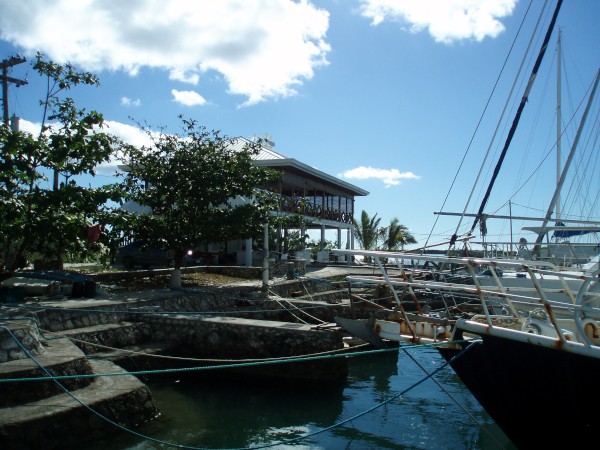 |
Photos of the boatyard, floating pens and workshops at the Drydock, Pt Carmen.
6 Photos
Created 20 May 2013
|
S.V. Shadow of Lorelei
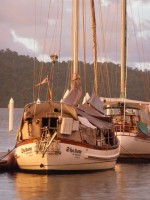
Who: Mauro Migliorelli & Pauline Wilkinson
Port: Brisbane, Australia
